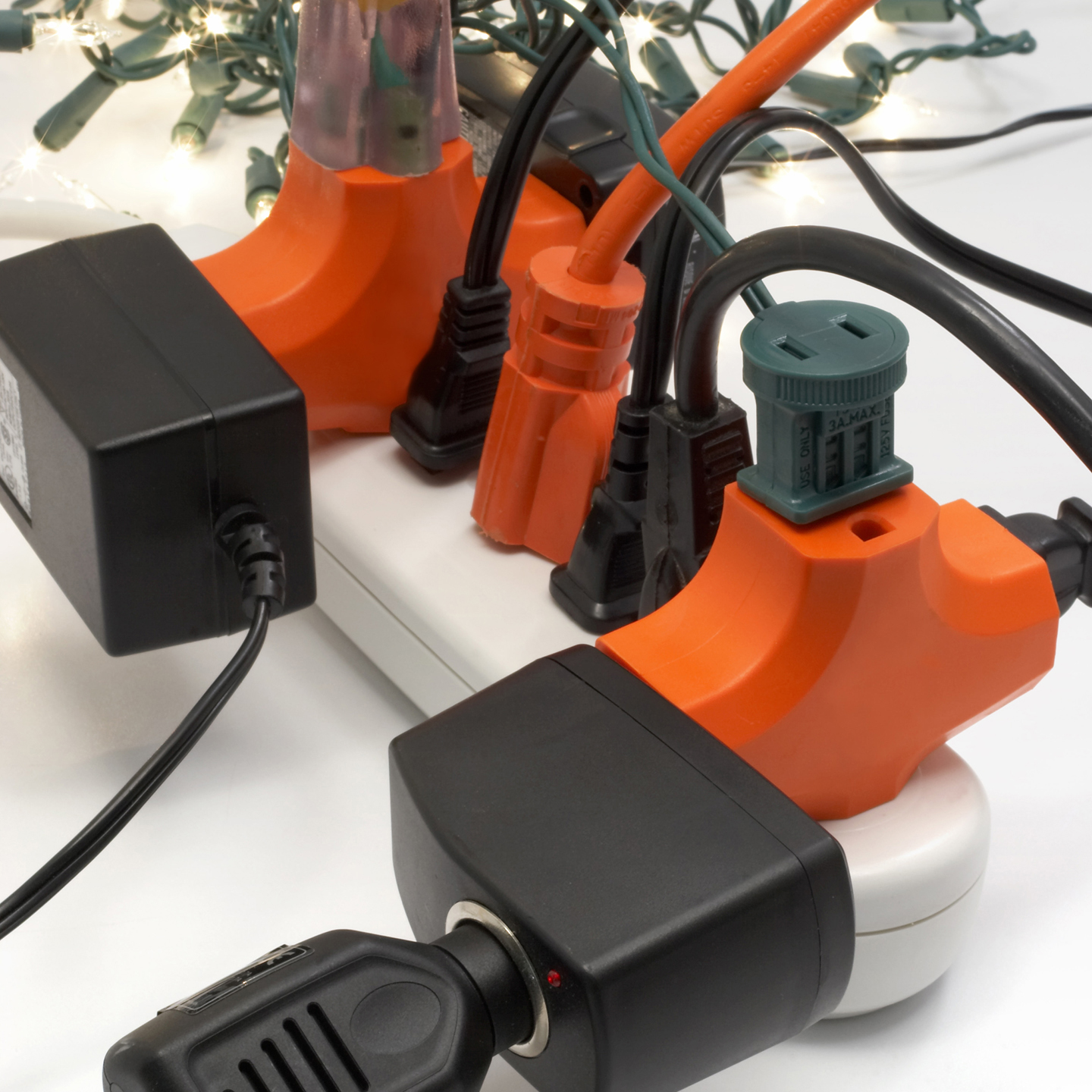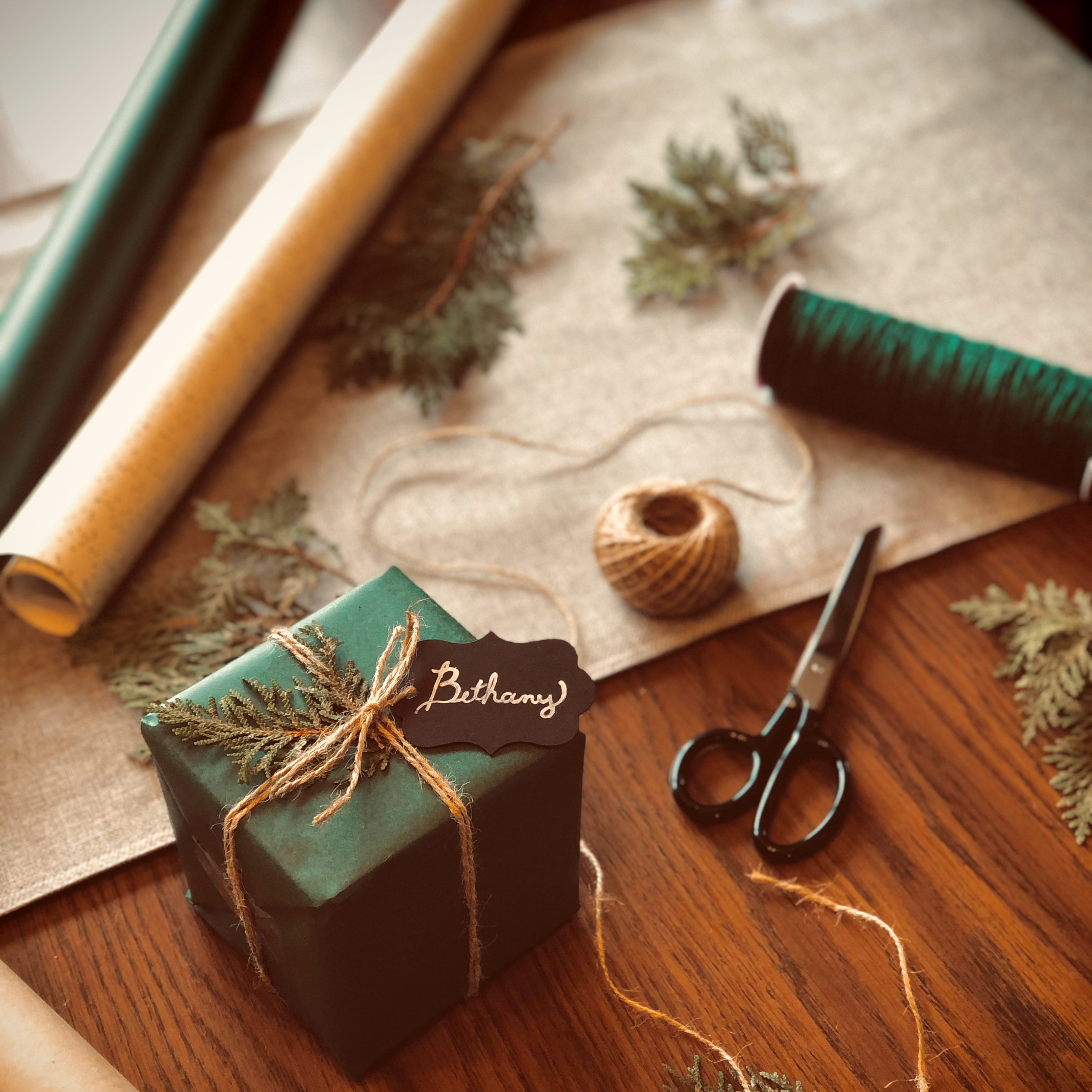
Did you know Christmas can be hazardous to your health? And not because you're eating too many Christmas cookies. Each year, people suffer injuries related to holiday activities - everything from falling off ladders while hanging outdoor Christmas decorations to getting cut opening packages.
According to the Consumer Product Safety Commission, about 160 decorating-related injuries occur each day during the holiday season, with almost half of the incidents involving falls. In 2019, such injuries sent about 14,800 people to the emergency room.
In the interest of keeping the season jolly, Christmas.com offers the following Christmas safety tips.
ELECTRICAL SAFETY

Electric decorations from Christmas lights to tabletop decorations to lawn ornaments can pose hazards if not used properly. Safe use of electric Christmas decorations helps avoid a holiday tragedy. Some electrical safety reminders:
- Inspect light cords and extension cords. Discard and replace any that are worn, frayed or cracked.
- Make sure there are no empty bulb sockets in your light strands.
- Do not use nails or staples to hang electrical cords, as they could pierce the wires inside. Instead, use clips and hangers made for the job.
- Use only UL-approved lights and extension cords.
- When hanging lights outside, use only lights that are approved for outdoor use.
- If you must use extension cords, use heavy-duty cords that can handle the wattage.
- Use a timer to turn lights on and off. Don’t leave lights on while you’re asleep or away from home.
- When connecting light sets, make sure the combined wattage does not exceed outlet capacity. Our technical lighting information guide offers deeper resources on how to connect Christmas lights.
LADDER SAFETY

You may need a ladder to hang Christmas lights on homes or tall trees. Improperly using a ladder, however, can injure you and others, and cause damage to property and public utility lines. This holiday season, remember these ladder safety tips:
- Make sure your ladder is sturdy and in good repair. Replace ladders that have buckled or damaged frames, or weak or broken rungs.
- Set the ladder on a level surface. Do not attempt to extend the ladder’s height by placing it on top of boxes, boards or any other base that could shift.
- Make sure spreaders on a step ladder are locked, or rung locks on an extension ladder and hinge locks on an articulating ladder are engaged.
- Place straight ladders one foot away from the wall for every four feet of height.
- Do not lean or reach beyond the ladder rails.
- Don’t use the top step of a straight or step ladder.
- Do not attempt to carry objects up a ladder; instead, pull them up using a liftline.
- Keep ladders away from power lines.
GIFT WRAPPING

Beware your Christmas gift wrap! Every holiday, thousands of people visit the emergency room due to injuries sustained while wrapping or unwrapping Christmas gifts. Injuries range from lower back pain from improper posture while gift wrapping to lacerations from a cutting instrument used to open a package. While these injuries generally were not life threatening, who wants a Christmas morning emergency caused by carelessness or inattention?
To ensure gift-giving remains a pleasure, here are some common sense safety tips:
- Wrap gifts while standing or sitting at a comfortable height. Take breaks and stretch frequently during marathon wrapping sessions.
- Take special care when using scissors or knives to open packages.
- Do not let children use knives to open presents.
- Do not wrap or unwrap presents near open flames, like lit Christmas candles or fireplaces.
- After opening gifts, clear up wrapping paper and ribbon to avoid slips and trips.
- Don’t burn wrapping paper in the fireplace.
COOKING & BAKING

Hazards can be served up in the kitchen, as well, from food-borne illnesses and cooking-related burns. Since kitchens often are bustling during the holidays, remember these kitchen safety tips while doing your Christmas baking and cooking.
- Wash hands, countertops and other surfaces to avoid contamination.
- Don’t eat uncooked cookie dough. Raw eggs and flour both have been linked to food illnesses.
- Take care when using stove tops and inserting or removing food from the oven. Keep fingers and forearms away from heating elements and always use a potholder.
- Keep raw meat away from other food. Use different cutting boards for meats and other food preparation.
- Thoroughly clean countertops and other items that come into contact with raw meat or juices.
- Keep kitchen towels, potholders and paper towels away from stovetops.
- Do not leave cooking unattended.
- Avoid licking fingers when cooking or while frosting Christmas cookies and cakes.
- Use a clean utensil to taste-test foods and don’t double dip.
TREE TIMMING

Even something as basic as trimming the Christmas tree has its risks, with broken ornaments and ladder accidents among the pitfalls. Keep these tips in mind when decorating your Christmas tree.
- Before setting up your artificial tree, wipe it down to remove dust, which is flammable (not to mention unattractive).
- Be cautious when young children help with decorating. Kids (and pets) can be cut by slivers from broken glass Christmas ornaments or shattered bulbs. Using shatterproof ornaments can help alleviate concerns.
- Keep Christmas light bulbs away from children. Youngsters have been known to ingest them.
- If you have a fresh tree, maintain the water level in the stand and never leave your lit tree unattended.
- Place your tree near an electrical outlet so light cords do not extend across walking paths.
OTHER DECORATIONS
- Candlelight provides a warm and welcoming glow during the holidays, but use candles cautiously. Place tapers and columns in sturdy holders, away from anything flammable, and don’t leave lit candles unattended. Alternatively, battery-operated flameless candles offer a similar flickering glow.
- Stake your inflatable lawn decorations firmly into the ground, or use sandbags or other weights to keep them from blowing away. Not only will this protect your investment, but it will prevent them from blowing into the street and causing potential road hazards.
- If you use stake lights to define your front walkway during the nicer months, consider holiday pathway lights to accomplish the same task in the winter. Keep your path free from snow and ice to avoid accidental slips.
- If your tree was natural, recycle or dispose of it properly at the end of the season. The U.S. Forest Service warns never to burn your Christmas tree in a fireplace or wood stove.
Christmas is a time for joyful gatherings with family and friends. Don’t dim that joy with a preventable injury. Be mindful of the dangers and take precautions wherever possible to avoid becoming an emergency room statistic.
